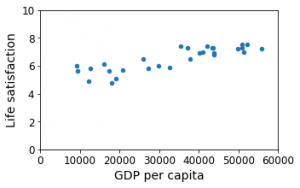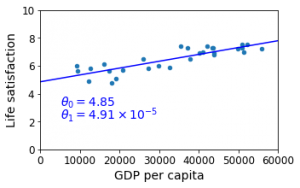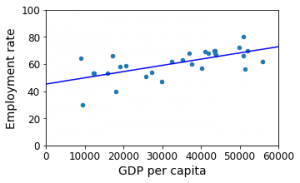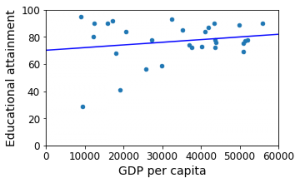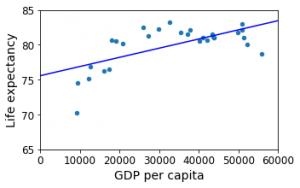Day: July 28, 2019
OECD and GDP Data Visualization
OECD and GDP Data Visualization
We are going to gather various OECD data about some countries and analyze these data to see whether higher GDP corresponds to better OECD stats. For this purpose, we must get OECD stats and GDP of the countries. OECD stats are downloaded from their official web page and GDP data is downloaded from IMF.
The data is in .csv form right now we need to ready our python code for the data. The python code basically gets the inputted data, feeds it into a regression model and outputs a prediction. In the first run I tried linear regression and the output was a linear prediction model.
Figure 1. GDP and Life satisfaction data
After the machine learning algorithm learns from the data we will observe the prediction model extracted from this learning.
Figure 2. Linear regression prediction model
The prediction line fits our data and agrees with the fact that money can buy happiness.
I have also tried different OECD data to extract more meaning from GDP effects on our life. Women Employment rate is very important for post-modern human struggles. Sadly, Turkey is by far the lowest in this area in OECD countries with 31% women employment rate.
Figure 3. Women Employment is also a function of GDP (and vice versa)
One of the most shocking fact I learnt from this assignment was the following example. I tried women educational attainment data against GDP and interestingly the line was nearly horizontal meaning there was no clear indication that GDP has an affect on women educational attainment rates.
Figure 4. Women Educational attainment rates
Finally I wanted to see the affects of GDP on life expectancy and it was clear that higher GDP results in higher life expectancy from the figure 5.
Figure 5. Life expectancy vs GDP
In conclusion, we can use different datasets and make predictions on these data sets to extract useful insight and information about how they are correlated with each other. Standard mathematical correlation processes here requires complex mathematical formulas and validation techniques while machine learning provides fast, accurate and numerous tools for different problems.
